BREAKING NEWS ITEMS [2009]
"GRG and Kurzweil Technologies"
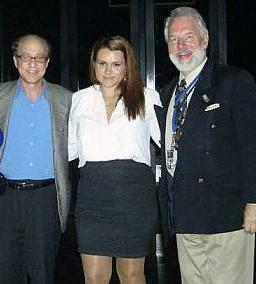
Friday, December 11, 2009; ~6:30 PM; From L to R; Ray Kurzweil, Natalie and Stephen Coles.
Following a meeting at the UCLA Ronald Regan Hospital, The LA-GRG has agreed to provide
content in the area of Biogerontology to the planned Kurzweil Technologies website starting in
February 2010.
"UCLA Emeriti Association Talk"
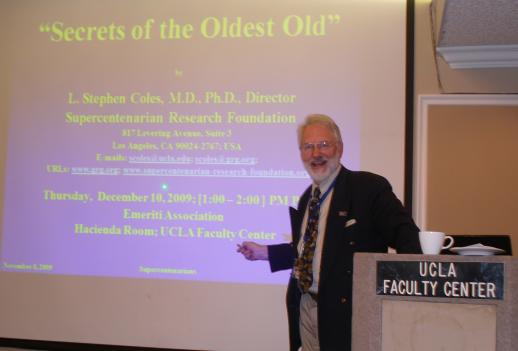
Thursday, December 10, 2009; [1:30 - 2:30] PM; Dr. L. Stephen Coles presented
"Supercentenarians: Studying the Oldest Old" to the UCLA Emeriti Association at the
Faculty Center. Emeritus Professors Bertram H. Raven of Psychology and Herbert Kaesz of
Chemistry wrote, "We write to express deep appreciation on behalf of the UCLA Emeriti
Association for your after-lunch presentation yesterday. Your subject, "The Supercentenarians:
Studying the Oldest Old," found a most appreciative audience both because of its interesting and
very relevant content as well as your most effective delivery. This was evidenced by the
questions and lively discussions which followed the talk. It was certainly one of our most popular
programs. Thank you for a most effective contribution to the Emeriti Speakers' program."
"UCLA Molecular Biology Institute"
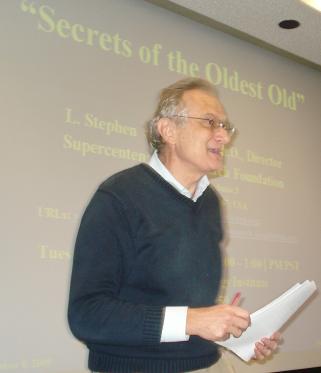
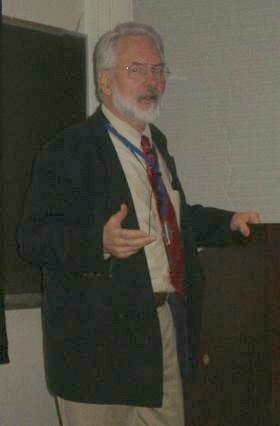
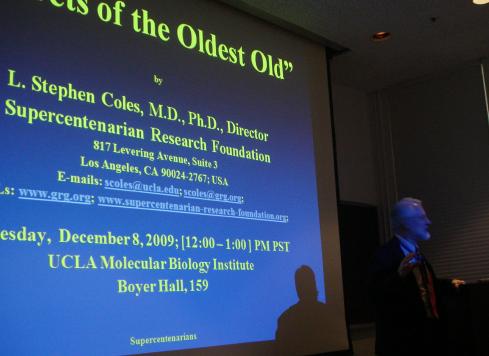
December 8, 2009; [Noon-1:00] PM PST; Prof. Steven Clarke, Director of the UCLA Molecular
Biology Institute, hosts a lecture on "Secrets of the Oldest Old" presented by L. Stephen
Coles.
"History of Robotics"
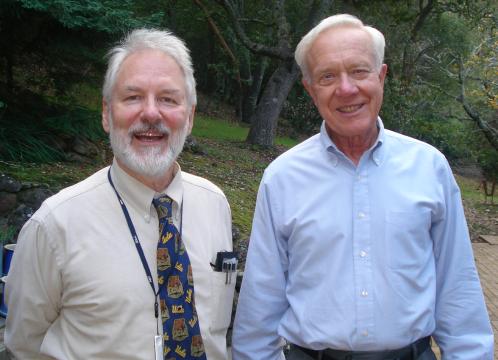
November 27, 2009; Stephen Coles presents Professor Emeritus and former Chairman of the
Stanford University Computer Science Department, Dr. Nils Nilsson, Ph.D. with two DVD's
(one from SRI in 1969 done on 16 mm film and then VHS Tape and one from JPL 1989 on VHS
Tape) for the Computer History Museum in Mt. View, CA. Because of its age, the 1969 video of
"The Robot and the Box" (TRT = ~13 min.) involved translating three generations of
video-recording technology. Click on the photo to download the Quicktime ("*.mov") versions
of these color videos from the Stanford AI website. Remember that 20 years elapsed between the
making of the first movie and the much longer second documentary movie.
February 22, 2012; The Fred Barton Amazing Internet Robot Museum: A Tribute to the
Robots in Entertainment has an excellent collection of fictional robots on TV and in the movies
by decade from RUR and Maria (Metropolis) in the 1920's, to the 30's,
40's, 50's, 60's, 70's, 80's, and the 1990's.
"DNA Analysis at Halcyon Molecular, Inc."
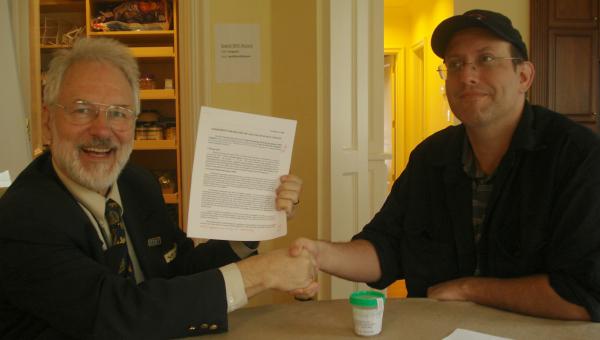
November 27, 2009; Stephen Coles of the SRF and Kent Kemmish, VP for R&D of
Halcyon Molecular of Los Altos Hills, CA agree to sequence the DNA of Mrs. Gertrude
Baines, 115 yo and The Guinness Book Oldest Person in the World when she
passed away on September 11, 2009 (tissue samples in the green top container), using a new
sequencing technology under development.
"Stem Cell Panel at CalTech"
November 24, 2009; [1:00 - 3:00] PM; Beckman Institute Auditorium; The CalTech
Student Biotechnology Club presented a Panel moderated by former CalTech President,
David Baltimore, consisting of Hanna Mikkola, M.D,. Ph.D., Department of Molecular, Cell, and
Developmental Biology, UCLA; Marie Csete, Ph.D., Former Chief Scientific Officer of CIRM
(The California Institute for Regenerative Medicine); and Ann Tsukamoto, Ph.D,, Executive
Vice President of Stem Cells, Inc. Progress toward the translation of basic science to
clinical medicine is slow but steady. FDA-approved Phase-I Clinical Trials are now underway
in a number of centers.
"The Manhattan Beach Project"
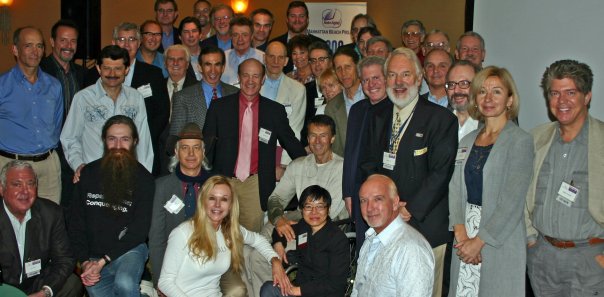
November 13-15, 2009; Manhattan Beach, CA; This three-day, invitation-only, 2009 Longevity Summit Conference
cosponsored by the Maximum Life Foundation of Huntington Beach, CA and The Life Extension
Foundation of Hollywood, FL held at the Marriott Hotel in Manhattan Beach, CA was attended
by some of the smartest biogerontologists ever assembled in one place at one time, including Ray
Kurzweil, Entrepreneur and CEO of www.AI.net;
Stephen Spindler, Ph.D. of UC Riverside, Michael R. Rose, Ph.D. of UC Irvine; William
Andrews, Ph.D., CEO of Sierra Sciences of Reno, NV; L. Stephen Coles, M.D., Ph.D. of UCLA,
John Furber, CEO of Legendary Pharmaceuticals of Gainesville, FL; Michael West, Ph.D., CEO
of BioTime of Alameda, CA; Gregory Fahy, Ph.D., VP of 21st Century Medicine of Fontana,
CA; Aubrey de Grey, Ph.D., CEO of the the SENS Foundation of Cambridge, UK; Peter Voss,
CEO of Adaptive AI, Inc., Santa Monica, CA; Robert A. Freitas Jr., J.D., Senior Research Fellow
for the Institute for Molecular Manufacturing of Palo Alto, CA; Ralph Merkle, Ph.D. Senior
Research Fellow for the Institute for Molecular Manufacturing of Palo Alto, CA; Robert
Bradbury, Pristine Stem Cells, Inc. of Cambridge MA; Michael Fossel, M.D., Ph.D., Michigan
State University, East Lansing, MI; Karlis Ullis, M.D., of UCLA and Santa Monica, CA; Dr.
Philip L. Miller, M.D., CEO of The Los Gatos Longevity Institute, Los Gatos, CA; Joseph
Mercola, D.O., CEO of Mercola.com, David Woynarowski, M.D., CEO,
"The Race Against Death";
David Kekich, CSO of the Maximum Life Foundation, Huntington Beach, CA [and Co-Chair];
and Neil Bodie, DVM, CSO of Trinity Therapeutics, Inc. of Agoura Hills, CA. Also: Noel
Patton, CEO of TA Sciences in NYC; Greta Blackburn, Director of Marketing of TA Sciences in
NYC [and Co-Chair]; Elena Kokurina of Science for Life Extension Foundation in Moscow,
RUSSIA, Drs. Leonid Gavrilov and Natalia Gavrilova of the University of Chicago, Kevin
Perrott. COO of the Lifestar Institute (CANADA), Ron Bailey of Reason Magazine,
Kenneth Weiss; Bill Faloon, Co-founder Life Extension Foundation; Saul Kent, Co-founder Life
Extension Foundation; Joe Sugarman, CEO Stem Cell Products, LLC; Mark Hansen of Mark
Victor Hansen and Associates, Inc.; Stephen Vallentine; Oliver Luckett, Disney Executive;
Wayne Allyn Root, 2008 Libertarian Party Vice Presidential Candidate; Richard Offerdahl,
Biotech and Computer Businessman.
Click on the photo for more details from "The Methuselah Manifesto: Witnessing the
Launch of Immortality, Inc.?" by Ronald Bailey (November 17, 2009). Another detailed
summary of the meeting can be found at "Actual Immortality Is Only Decades Away,"
ImmortalHumans.com.
Friday morning, November 13, 2009; Click for a link to the talk given by Dr. Stephen Coles
on
Secrets of the Oldest Old (RT Part 1
= 10:07; RT Part 2 = 10:48; RT Part 3 = 8:15; TRT = 29:05 min.).
Description:
Famed UCLA researcher Stephen Coles discusses anti-aging interventions, the causes of aging
and senescence, and the reasons why a few people (with lucky genes) are able to live past the age
of 110 years, so-called Supercentenarians.
Pointing to the cover of the current issue of Skeptic Magazine, referring to the
Hollywood movie "2012," to be released tonight [and now out on DVD Blu-Ray; March
2, 2010; Two-Disk Sony Special Edition $22.99 on Amazon.com], he asks facetiously,
"Why are we studying human life extension if, according to the Mayan Calender, the whole
world is going to be terminated in just three more years?"
Also, it documents a personal letter to Coles written by the extraordinary science-fiction writer
Sir Arthur C. Clarke on October 26, 1962 from his Technopolis Compound in
Colombo, Sri Lanka, Ceylon, wishing Coles luck on his request for assistance in creating a
Nobel-Prize Committee to establish a scientific institute for the engineering of human
immortality, something that Clarke first proposed in an article he wrote that was published in
Playboy Magazine ("The Hazards of Prophecy," Vol. 9, No. 3, p. 102 (July 1962) and
subsequently republished in his book Profiles of the Future: An Enquiry into the Limits of
the Possible (Harpers, New York; January 1963; reprinted in paperback December 2000;
$4.90 on Amazon.com)). Clarke's most famous quote from this period was "Any
sufficiently advanced technology is indistinguishable from magic." Although it didn't come in
time for Clarke who died early last year (March 19, 2008), 47 years after Clarke's prescient
forecast, that's precisely what The Manhattan Beach Project hopes to accomplish in
our lifetimes!
"Fall AMMG Conference at the Red Rock in Las Vegas,
NV"
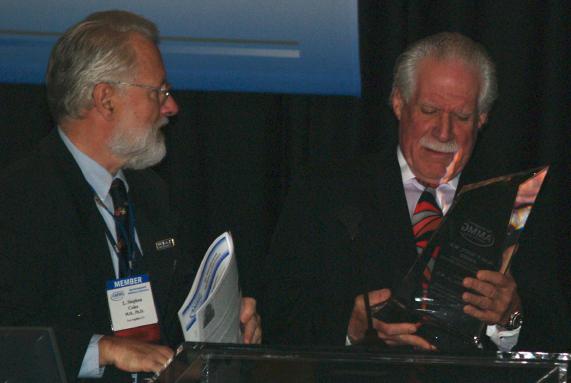
Friday, November 5, 2009; Las Vegas, NV; Dr. L. Stephen Coles, last year's awardee, passes the
Alan P. Mintz, M.D. Award (crystal statuette) to Dr. Robert Willix, Jr., M.D. of Boca Raton, FL,
at the opening ceremonies of the Age Management Medicine Group Conference around
8:20 AM PST at the Red Rock Resort and Spa Meeting Center.
AMMG Conferences in 2010...
April 22-25, 2010
The Boca Raton Resort and Club
Boca Raton, Florida
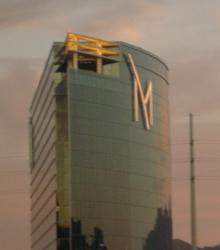
November 11-14, 2010
The "M" Resort and Spa
Las Vegas, Nevada
"UCLA Technology and Aging Conference"
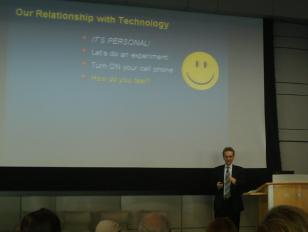
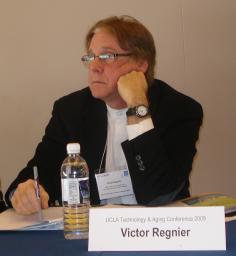
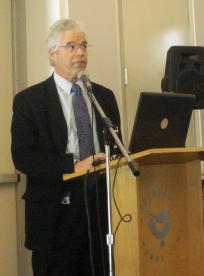

Friday, October 30, 2009; Dr. Gary Small, M.D., Professor of Psychiatry and Biobehavioral
Sciences at the UCLA Center on Aging held a one-day Conference on Technology and
Aging: Living Longer and Better through Technology for ~300 attendees at the Skirball
Cultural Center in Los Angeles. Among the attendees were Profs. Regnier and Rome who along
with Prof. Small were former speakers to the LA-GRG in our early years. David Murdock,
Chairman of Dole Foods, was the Noontime guest speaker on the topic "Successful Aging
through Nutrition and Active Living.
"Bioethics Roundtable at LMU in Westchester"
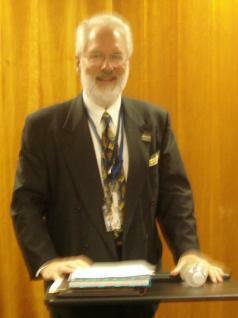
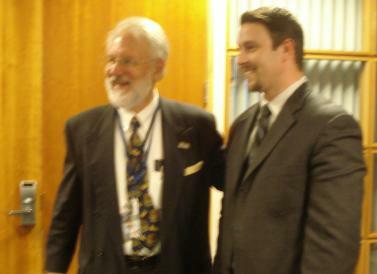
October 22, 2009; 4:45 PM PDT; Prof. L. Stephen Coles, M.D., Ph.D. gave a one-hour talk on
"Ethical Conflicts in Being a Physician and a Medical Scientist: A Case Study," to an audience
of about 30 persons at the Bioethics Institute of Loyola Marymount University in Westchester,
CA hosted by Dr. Nicholas J. Kockler.
"2009 Nobel Prize in Medicine: Aging and Telomeres"
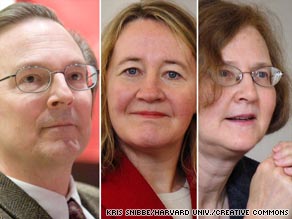
Profs. Jack Szostak, from left, Carol Greider and Elizabeth Blackburn will share the $1.4 million
prize.
.
Refs.:
1. Nobel Committee
"Press Release" (October 5, 2009).
2.
CNN (October 5, 2009).
3. The Scientist
(October 5, 2009).
4. Howard Hughs Medical
Research Institute (October 5, 2009).
5. Gautam Naik, AP and
The Wall Street Journal, pp. A1,5 (October 6, 2009).
6. Thomas H. Maugh, II,
The Los Angeles Times, pp. A1,12 (October 6, 2009).
7. The New York Times, p. A11 (October 6,
2009).
8. Elizabeth Weise and Dan Vergano. USA
Today, p. 7D (October 6, 2009).
Aside from her research, Blackburn is well-known for criticizing The President's Council on
Bioethics, on which she served from 2001 and 2004. She was dropped from the council
after submitting a dissenting opinion on a stem cell report, which called for a moratorium on
embryonic cell research, and complained in The New England Journal of Medicine of "a
growing sense that scientific research which, after all, is defined by the quest for truth is
being manipulated for political ends," by the Bush Administration.
9. Tina Hesman Saey, "Nobel in Medicine Honors Discoveries of Telomeres and Telomerase:
Elizabeth Blackburn, Carol Greider, and Jack Szostak Will Share the Prize" Science News (October 5, 2009).
Crucial endings Experiments with this pond-dwelling organism, Tetrahymena
thermophila, led to the identification of protective caps on the ends of chromosomes. The
discovery of these caps, called telomeres, and the enzyme that puts them there, known as
telomerase, has earned researchers Elizabeth Blackburn, Jack Szostak and Carol Greider
the 2009 Nobel Prize in Physiology or Medicine.
10. Gretchen Vogel and Elizabeth Pennisi, "U.S. Researchers Recognized for Work on
Telomeres," Science, Vol.. 326, No. 5950, pp. 212-3 (October 9, 2009).
"Richard Dawkins Lectures in Burbank"
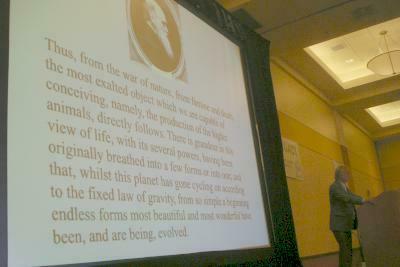
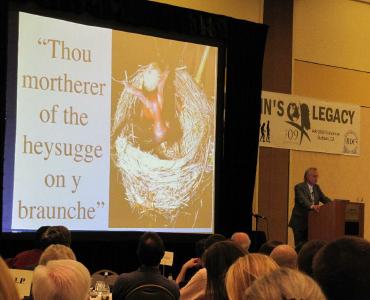
Saturday, October 3, 2009; 8:30 PM; Burbank, CA - - Using PowerPoint slides and in
his traditional Oxfordian accent, Prof. Richard Dawkins gave the Darwin Lecture on
his US book tour for his latest book The Greatest Show on Earth: The Evidence for
Evolution during which he read excerpts from Chapter 13, "There Is Grandeur in this View
of Life" to an audience of over 500 persons followed by a "book signing." In particular, five
types of Biological Memory were discussed...
1. Genetic (digital information encoded in our DNA);
2. Epigenetic (methyl groups on DNA and ethyl groups on the histones of our chromosomes that
are responsible for differential gene expression, even in identical twins as a function of age, as
modulated by particular lifestyle events);
3. Immunologic (Antibodies that record our exposure to non-self antigens in preparation for
future exposure to bacterial, viral, and parasitic infections);
4. Brain (Memories encoded in our neural firing patterns that establish individual identities); and
5. Species Memory (Cultural knowledge in our recorded history over the last [5-10] thousand
years that probably extends from the pentateuchal verbal traditions [the first five books of the
Hebrew Old Testament] and other creation myths to modern science and technology).
Ref.:
Susan Salter Reynolds, "Evolving Argument: After Taking Acceptance of Evolution for Granted,
Dawkins Addresses the Doubters," The Los Angeles Times, p. E10 (October 11,
2009).
"Natural selection explains everything about us - - our brains, our bodies, our eyes - - and yet
what it assumes is childishly simple." - - Richard Dawkins
Dawkins next book will be for 12 year olds, an expansion of a letter about the importance of
critical thinking that he wrote to his Daughter, Juliet, when she was 10 years old. She's now a
medical student. In it, he describes the dangers of "tradition," "authority," and "revelation." How
do we know that the Earth is a small ball whirling around the Sun? The answer is 'scientific
evidence', not revelation.
"Who Is Dead and Eligible to Donate Organs?"
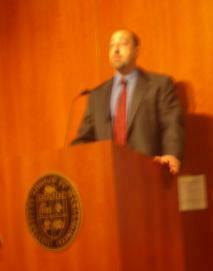
Wednesday, September 16, 2009; 8:00 PM; The 2009 Annual Bioethics Institute Lecture of
Loyola Marymount University in Westchester, CA was given by Dr. James DuBois, Ph.D., DSc,
Mader Professor of Health Care Ethics, Department Chair and Center Director, Saint Louis
University in St. Louis, MO.
Dr. DuBois has published numerous articles and books in the field of bioethics, including
his recent Ethical Research in Mental Health (Oxford University Press, New York;
2007). During his talk he cited the work of the President's Council on Bioethics under the Bush
Administration entitled Controversies in the Determination of Death: A White Paper
(Washington, D.C.; December 2008).
HR>
"Gertrude Baines [1894 - 2009]"
September 11, 2009; Mrs. Baines passed away at 7:20 AM PDT on Friday, September
11, 2009. Her Funeral Service was held on Wednesday, September 24, 2009 at 10:00 AM at the
Harrison-Ross-Mortuary Chapel; 4601 Crenshaw Blvd.; Los Angeles, CA 90043. She was
interred in a mausoleum at the Inglewood Park Cemetery; 720 East Florence Avenue; Inglewood,
CA 90301 near the site of former Mayor of Los Angeles, Tom Bradley.
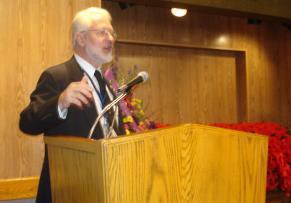

Dr. Stephen Coles at the Funeral Service, and Dr. Charles Witt, Gertrude's personal physician,
with Dr. Coles outside.
Refs.:
1. Esmeralda Bermudes, "Obituary: Gertrude Baines: Former Maid, 115, Was the World's Oldest
Person," The Los Angeles Times, p. A27 (September 12, 2009).
2. The Wall Street Journal, p. A1 (September 12, 2009).
3. Guinness World Records 2010: The Book of the Decade, pp. 11,71 (London, UK;
2009).
"Cancer Control Society Conference"

September 7 (Labor Day) and September 8, 2009 (Doctor's Symposium); Stephen
Coles gave two lectures on Nature's Anti-Cancer Pill: IP-6 at the Sheraton
Universal Hotel in Universal City, CA.
"Monkey Model To Cure Inherited Mictochondrial DNA
Disease Mutations"

August 26, 2009; Living on borrowed DNA, these twin Rhesus monkeys, born on April 24,
2009, developed from cells with donor mitochondrial DNA, a technique that may halt the
transmission of certain kinds of inherited diseases. Mito (on the left) and
Tracker (on the right) were named for a dye called Mitotracker, which labels
mitochondria. Click on the photo for more details. Additional information can be found
R&D.
"Latest US Life Expectancy Statistics from the CDC"

August 20, 2009; The latest CDC data [1975 -2007] reveals that US life expectancy has
risen slightly to a new high of nearly 78 years. The increase is due mainly to falling death rates in
almost all the leading causes of death. The average life expectancy for babies born in 2007 is
nearly three months greater than for children born in 2006. The new U.S. mortality data is a
preliminary report based on about 90 percent of the Death Certificates collected in 2007. It comes
from the National Center for Health Statistics, part of the Centers for Disease
Control and Prevention. Click on the Graph for the full report (Joaquan Xu, et al., "Deaths:
Preliminary Data for 2007," National Vital Statistics Reports, Vol. 58, No. 1 (August 19,
2009)).
"BBC Radio-4: Secrets of the Super Old"

August 12, 2009; 21:00 GMT (1:00 PM PDT) London, UK; A 30-minute BBC-radio
program included interviews with a number of Supercentenarians, including Mr. Henry
Allingham, veteran of WW-I, shortly before his death at age 113, Mrs. Eunice Bowman, 110 yo,
and Madam Jean-Louise Calment, 122 yo.
Mr. Adam Rutherford investigates how the oldest people on the planet are helping scientists
to unlock the secrets of aging, helping us age better and perhaps even live longer.
Supercentenarians are one of the most exclusive groups of people on the planet, having reached
the staggering age of at least 110. How are they doing it and what can we learn about longevity
from them?
Adam talks to the scientists about how we could all live longer, and meets the incredible
people whose lives have spanned three centuries. Scientists interviewed included Rudy
Yesendorf, Dr. Tom Perls, M.D., Director of the New England Centenarian Study, Dr. L.
Stephen Coles, M.D., Ph.D., Director of the Supercentenarian Research Foundation, and Mr.
Robert Young of Georgia State University. Mr. Allingham said that the secret to longevity was
to "Be good." Ms. Bowman said, "Just keep on living."
To listen to this interesting program, click on
BBC Radio-4 or the
image above.
"Chinese Scientists Reprogram Mouse Skin Cells to
Create Many Baby Mice"
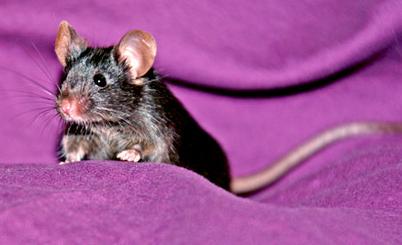
July 24, 2009; Two teams of Chinese researchers working separately have reprogrammed mature
skin cells of mice to an embryonic-like state and used the resulting cells to create live mouse
offspring for several generations of mice. But this stem-cell success in China creates an ethical
quandary if it were ever applied to humans; click on the photo of Xiao Xiao ("Tiny" in
Chinese) for more details.
[Editorial: Much more work needs to be done to raise the efficiency of iPS
reprogramming (using the right nutritional media, temperature, atmospheric pressure, CO2/O2
composition, Growth Factors, Transcription Factors, electrical DC/[slow AC] gradients, etc.).
The difference between cloning cats (easy) and dogs (hard), for example, had to do with the
exquisite timing of canine ovulation. Who would have known if it the basic techniques had not
been repeated over and over in the lab with different variations? It's all highly empirical (and
lucky) until we figure it out. Nature never supplied us with a 'how-to manual'. But, I suspect She
never inserted a trick up-her-sleeve with the sole purpose of frustrating humans, either. She just
does Her own thing over and over again, and it's up to us to figure out what that is. - - Steve
Coles]
"Mr. Henry Allingham of England, World's Oldest Man
Dies at 113"
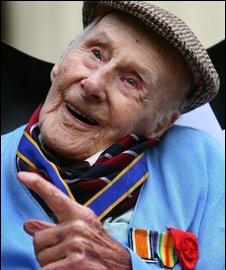
July 18, 2009; Click on the photo for an Obituary in Sunday's LA Times.
"Monkeys Fed on CR in Wisconsin for Two Decades
Live Longer"
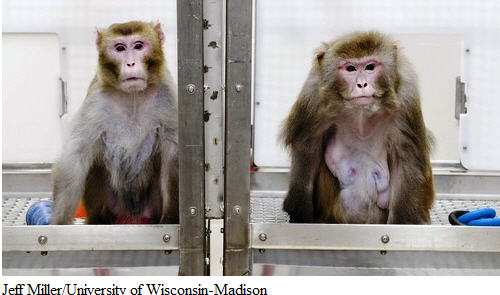

July 11, 2009;The bottom-line message from a decades-long study of monkeys on a calorically
restricted diet is simple: Consuming fewer calories leads to a longer, healthier life. Writing in the
journal Science, a team of researchers at the University of Wisconsin-Madison, the
Wisconsin, National Primate Research Center, and the William S. Middleton Memorial Veterans
Hospital reports that a nutritious but reduced-calorie diet blunts aging and significantly delays the
onset of such age-related disorders as cancer, diabetes, cardiovascular disease, and brain atrophy.
Click on the monkeys to find the Abstract. Senior Author = Prof. Richard Weindruch.
"Rx: Rapamycin Increases Lifespan in Mice"

July 8, 2009; A drug used to prevent the immune rejection of transplanted organs and as an
experimental cancer treatment in humans can significantly increase lifespan when given to
adult mice, researchers have found. Mice that were administered the immunosuppressant
Rapamycin lived an average of [9 - 14] percent longer than mice that were not fed the
drug, according to a paper published on-line in Nature today (July 8th). Click on the
mice to find the Abstract.
Superficially, this result appears paradoxical in that one would have to explain how
inhibition of T-cell function should be life-lengthening and not life-shortening. But recall that
these mice have lived in a controlled environment without real-world exposure to bacteria and
viruses, so its applications to humans remains questionable unless one were willing to live in a
germ-free bubble.
"BioArts International of Mill Valley, CA Clones 9-11
Dog, Trakr
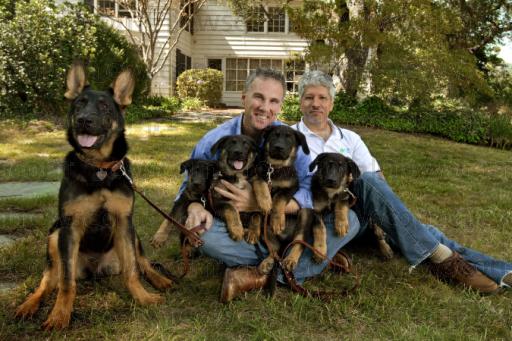
Mr. James Symington (L) of Los Angeles holds five clones of Trakr, his late search-and-rescue
dog, who found the last human survivor in the rubble of the 9/11 attacks. Symington received the
clones for free after Trakr was judged the most "cloneworthy" dog in the world. Mr. Lou
Hawthorne (R), CEO of BioArts International, whose company sponsored the
Golden Clone Giveaway Contest won by Symington in 2008 with an essay about
Trakr's heroism. Not shown: [The discredited] Dr. Hwang Woo Suk, who directed the team
that produced the clones. (Photo by Ben Glass.)
Editor's Note: The five puppies are of different sizes, since they were born at
different times to different surrogate bitches, i.e., they were not all from the same litter. Not
mentioned is that BioArts International has a common history with Genetic
Savings and Clone and which cloned Missy (see other news items about
Missy in the News Section of this website). Click on the photo for more
details.
"Owner to Receive Five Cloned Puppies June 17th in Los Angeles"
Ex-police officer and certified search and rescue manager won a contest to clone his beloved
pet Trakr, hero of 9-11 rescue efforts.
June 17, 2009; Los Angeles, CA ( PRNewswire) -- Can you clone a hero? Retired
police officer James Symington, owner of the late search-and-rescue dog and 9-11 hero,
Trakr, will receive five answers to that question on Wednesday, June 17, 2009. BioArts
International, a Northern California biotech company that is offering the first commercial
dog-cloning service in the world, will be presenting Symington with five puppies -- perfect
clones of Trakr -- at a press conference Wednesday afternoon in Los Angeles. Symington won
the "Golden Clone Giveaway" contest sponsored by BioArts International in 2008, by writing to
the company and explaining why Trakr was an ideal candidate for cloning. The company's other
dog cloning clients have paid an average of $144,000 to clone their canine pets, but Symington
will receive his puppy clones of Trakr for free.
BioArts International holds the sole, worldwide license for the cloning of dogs,
cats, and endangered species, and is partnered with Sooam Biotech Research
Foundation of South Korea, the world's foremost experts in canine cloning. The cloning of
Trakr occurred at Sooam under the direction of Dr. Hwang Woo-Suk, who produced the world's
first canine clone in 2005. "We received many very touching submissions to our contest,
describing some truly amazing dogs," says Lou Hawthorne, CEO of Bio Arts
International. "But Trakr's story blew us away. His many remarkable capabilities
were proven beyond all doubt in our nation's darkest hour -- and we're proud to have cloned him
successfully." Trakr was credited with hundreds of arrests and recovered more than $1
million in stolen goods during his career as a police search-and-rescue dog. Symington, a police
officer at the time of the Sept. 11th attacks, arrived with Trakr at Ground Zero as one of
the first K-9 search and rescue teams on the scene. There, under horrific conditions,
Trakr located the last human survivor to be found in the rubble. "Once in a lifetime, a dog
comes along that not only captures the hearts of all he touches but also plays a private role in
history," Symington wrote in his winning essay in the BioArts' contest to find the
world's most "cloneworthy dog."
For his heroic efforts, Trakr was presented with an extraordinary service to humanity award
by Dr. Jane Goodall, United Nations "Messenger of Peace," and was featured in books and
magazines dedicated to 9-11 heroes including Dog World and In the Line of Duty. At an
emotional first meeting with the Trakr clones on Sunday, June 14th, Symington observed,
"They're identical -- down to the smallest detail. Few dogs are born with exceptional abilities --
Trakr was one of those dogs. And if these puppies have the same attributes as
Trakr, I plan on putting them in to search and rescue so they can help people the way
Trakr did."
In order to clone Trakr, Dr. Hwang's team replaced the genes in eggs from unrelated dogs
with genes from Trakr, stimulated the resulting "couplets" to develop into embryos, then
transferred the embryos to dogs who served as surrogate mothers. After normal pregnancies, they
gave birth to puppies that are genetically identical to Trakr, the first of which was born
December 8, 2008 and the last on April 4, 2009. All were born and weaned in Seoul, South
Korea, and all are in excellent health.
"9-11 was a terrible shock for Korean people as well as Americans," said Dr. Hwang by E-
mail from Seoul, South Korea. "These five clones of Trakr, who saved a human life at
Ground Zero, are a gift not just to Mr. Symington, but to America and the world." Other 9-11
rescue participants reacted positively to news of Trakr's cloning. Rick Cushman of Saugus, MA
was a volunteer with the Massachusetts Emergency Measures Agency who drove to
New York City following the 9-11 attacks to assist with rescue efforts. On the morning of
September 12th, Cushman was searching the same area as Symington and Trakr when
Trakr hit upon the scent of a live person in the rubble. "That hit led us to Genelle
Guzman, the fifth and final survivor," said Cushman, who helped pull the injured woman from
the debris. "I am proud to have been involved in this rescue and proud to have worked alongside
James and Trakr. If Trakr hadn't picked up her scent, we might not have known
she was there. They helped save her life."
BioArts International is a biotech startup based in the San Francisco Bay Area,
with primary scientific labs in Beijing, custom micro-engineering operations in London, and key
scientific partnerships in Seoul, South Korea, and other areas.
"UCLA Annual Research Conference on Aging

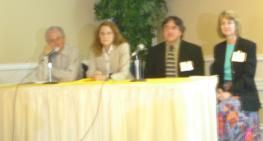
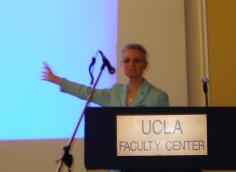
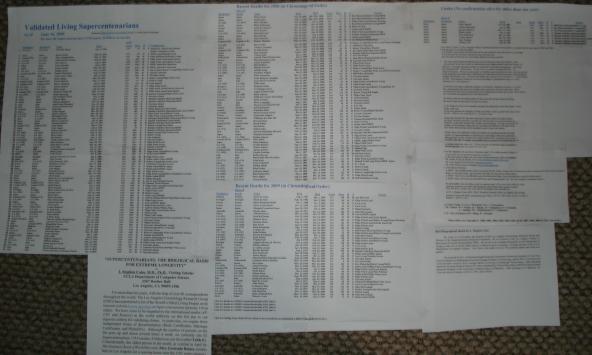
Tuesday, June 16, 2009 [8:00 AM - 12:30 PM] - The UCLA Center on Aging held its
14th Annual Research Conference on Aging at the Faculty Center. Prof. Gary Small, M.D.
did the introductions.
The Panel Discussion was Moderated by Prof. Zhaoping Li, M.D., Ph.D. and included (from
Left to Right) Prof. Stephen R. Spindler, Ph.D. from UC Riverside, Prof. Sally A. Frautschy,
Ph.D., of the UCLA Department of Neurology and Medicine, Prof. Fernando Gomez-Pinilla,
Ph.D. of the UCLA Department of Physiological Science, and Prof. Catherine F. Clark, Ph.D. of
the UCLA Department of Chemistry and Biochemistry.
The third photo shows the Keynote Speaker, Lynn Daucher, Director of the California
Department of Aging, speaking on the topic "Research Network to Aging Network."
The last photo shows GRG's Table E displayed as Abstract 21 (out of 37) during
the Poster Sessions set up in two adjacent rooms.
"Noon Grand Rounds at Providence Tarzana Medical
Center"
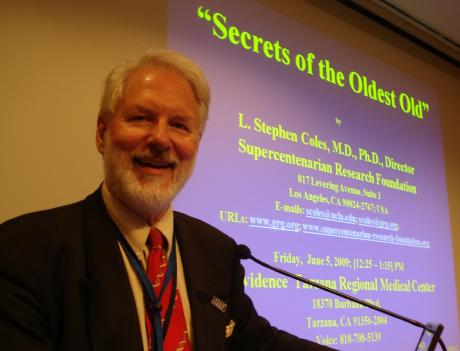
June 5, 2009; Dr. Stephen Coles presented a Noon time Grand Rounds entitled, "Secrets of the
Oldest Old" at the Providence Tarzana Regional Medical Center this afternoon to about 50 staff
physicians.
"UCLA Marschak Memorial Colloquium"
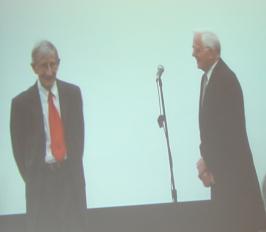
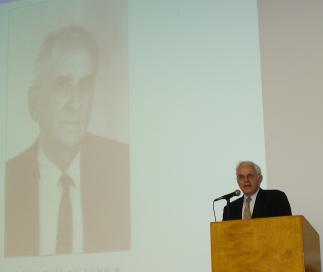
May 8, 2009; 1:00 PM; Introduced by Dr. Micahel D. Intriligator of Economics, Dr.
Freeman Dyson, Professor Emeritus of Physics at the Institute for Advanced Studies at Princeton
University presented the Annual Marschak Memorial Colloquium at UCLA on the topic
"Domestication of Biotechnology." One of the greatest mathematicians of the last century, John
von Neumann, who invented many of the stored-program concepts of modern computers and for
whom the "Johnniac" computer at RAND Corp. in Santa Monica was named, failed utterly to
foresee the domestication of computes as toys for three-year old children. When it becomes a
routine high school science project to create new plant and animal species using a standardized
kit, how shall we safeguard our society against misadventures, like the end of civilization as we
know it? Prof. Dyson remains unafraid and seeks to maintain science and technology as open
source as possible. Approximately, 90 persons attended the lecture from all departments at
UCLA. Click on the second photo for more details.
"Spring AMMG Conference in Boca Raton, FL"
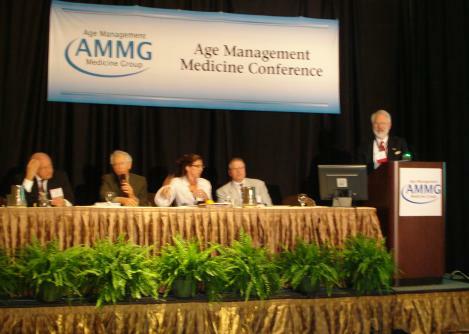
Thursday, April 30, 2009; 4:00 PM EDT; Boca Raton, FL; Stephen Coles chaired the afternoon
panel on "Hormone Balancing for Men and Women" (Preconference No. 2 of 3). Drs. Jeffrey
Life, M.D., Ph.D., Jay Mead, M.D., Anna Cabeca, D.O., and Paul Thompson, M.D. participated.
They were later joined by Drs. Ronald Wheeler, M.D., Derrick M. DeSilva, Jr., M.D. and Neil
Rouzier, M.D. Approximately 250 physicians attended this four-day Spring conference.
Question: Why don't zebras suffer from stress? Answer: According to Dr.
Eldred B. Taylor, M.D. of Texas, they actually do suffer stress, but it's not chronic
stress. They either escape from their predator(s) and quickly calm down within minutes or
they get eaten and then the question is moot. However, humans do suffer adrenal exhaustion
secondary to chronic stress. This leads to Insulin Resistance and Metabolic Syndrome
(Syndrome X), heart disease, stroke, and other stress-related conditions. For details, see Robert
M. Sapolsky, Why Zebras Don't Get Ulcers, 3rd Edition (Paperback) (Holt; 2004).
"Sally Gappell Talk at Westwood Horizons"
Sunday, April 26, 2009; 3:30 PM; Dr. L. Stephen Coles spoke to a group of about 40
residents of Westwood Horizons near UCLA for an hour on the "Secrets of the Oldest Old." Mrs.
Sally Gappell was a well-known resident of Westwood Horizons for several years before she
passed away at age 109.
"South Korea Creates First Transgenic Puppy"
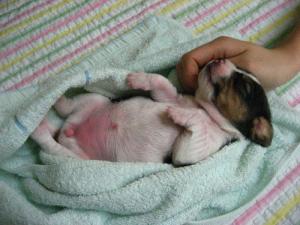
April 23, 2009; Click on the photo for more details.
Ref.:
"Fluorescent Puppy Is World's First Transgenic Dog," New Scientist (April 23, 2009).
"CIRM Town Hall in Los Angeles"
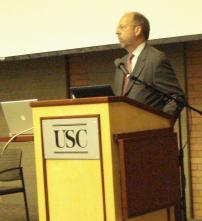
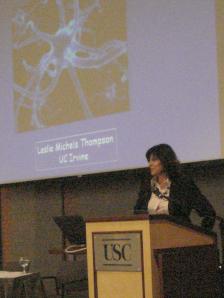

April 22, 2009; The California Institute of Regenerative Medicine (CIRM) held the third in
a series of Town Hall Meetgings at the Davidson Center at the USC main campus this evening at
6:30 PM. Don Gibbons, the Chief Communications Officer of CIRM served as host; in his
opening remarks he mentioned the State of California sold not just $3 billion in bonds but $6.8
billion on Monday, April 20th. Therefore, CIRM should have no trouble in meeting its financial
obligations going forward.
Don next introduced Prof. Martin Pera, Ph.D., Director of the Eli and Edyth Broad Center
for Regenerative Medicine and Stem Cell Research at USC, who gave a 20 minute lecture on
"Stem Cells 101." He mentioned that future challenges for translating basic research in stem
cells to therapies include the fate of grafted (or infused) cells (Do they survive for a very long
time in the host? Do they integrate into the proper tissues and organs? Are they susceptible to any
on-going pathology that may have killed the prior cells? Will they be rejected by the host
immune system?) and how can we improve the inefficiency of reprogramming amplifying, and
maturing of cells to a fully functional state. For example, iPS cells frequently differentiate to the
progenitor stage but never become fully functional. He noted that it took 270 attempts before Dr.
Ian Wilmut was able to create Dolly the sheep, the first mammalian clone.
Don then introduced Prof. Leslie Michels Thompson, Director of the Neuroscience Graduate
Program of UCI in Irvine, CA. She is a world specialist in Huntington's Disease.
Finally, Don introduced Dr. Don Kohn of UCLA (recently from USC) who specializes in
Bone Marrow transplantation, especially for Sickle Cell Anemia.
"Iran Clones Goat

April 16, 2009; Ishahan, IRAN Iranian scientists have cloned a goat and plan future
experiments they hope will lead to a treatment for stroke patients, the leader of the research said
Wednesday. The female goat, named Hana, was born early Wednesday in the city of
Isfahan in central Iran, said Dr. Mohammed Hossein Nasr e Isfahani, Head of the Royan
Research Institute. "With the birth of Hana, Iran is among five countries in the world cloning a
baby goat," said Isfahani, an embryologist. In 2006, Iran became the first country in the Middle
East to announce it had cloned a sheep. Two and a half years later, that animal is healthy, the
institute said. Click on the photo for more details.
"Oldest Person in the World of Los Angeles, California
Turns 115"
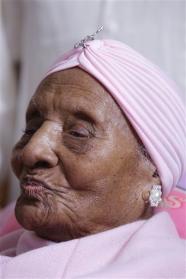
April 7, 2009; Mr. Robert Young, Senior Editorial Consultant for Gerontology awarded
Mrs. Gertrude Baines, the oldest person in the world, her Official Certificate from The
Guinness Book of World Records today on the occasion of her 115th Birthday. The party
was attended by more than 50 persons. Dr. Stephen Coles presented her with a plaque from the
Supercentenarian Research Foundation (SRF) and a Letter from the President Barack Obama's
White House Greetings Office. There were also letters of congratulation from the Mayor of Los
Angeles, the Governor of California, US Sen. Diane Finesteins (D, CA), as well as a number of
other local politicians (mentioned in the stories below). Gospel music was provided by members
of Mrs. Baines' Baptist Church. A good time was had by all. Click on the photo for more details
and a video clip from the LA Times.
Refs.:
1. AP, "World's Oldest Person Celebrates 115th in LA" (April 6, 2009; Los Angeles,
CA).
2. Esmeralda Bermudez, "For Her, Reaching 115 Isn't Old Hat: Gertrude Baines, the Oldest
Living Person, Receives Well Wishes - and a Cooler Full of Dodger Dogs,"
The Los Angeles Times, p. A5 (April 7, 2009). Click on this same link for a video
clip done by the LA Times, a print newspaper! (TRT = 1:48).
Also, click for a blog on "a slice of bacon a day"...
Bacon:
Key to Longevity?"
3. KPCC 89.3 FM-Radio; Monday, April 6, 2009 at 2:01 PM PDT; TRT= ~2 min.
4. KCAL-9
(CBS-TV in Los Angeles) has a short video clip of Gertrude Baines narrated by Randy
Paige with an interview of Dr. Charles Witt, Jr., M.D., Gertrude's Attending Physician
(TRT=2:49 min.).
5. KCBS-TV (Monday, April 6, 2009; 4:03 PM PDT; Los Angeles, CA).
6. KNBC-TV (Chnl. 4) (Monday, April 6, 2009; 5:55 PM PDT; TRT = ~3min.).
7. KCAL-9 (CBS Chnl. 9)(Monday, April 6, 2009; 8:55 PM PDT; TRT = ~1 min.).
8. FOX-11 (Chnl. 11)(Monday, April 6, 2009; 10:35 PM PDT; TRT = ~1 min.).
9. You Tube
Video (TRT = 3:45 min.).
10. Gertrude Baines in
Wickipedia.
11. John Rabe, Host, KPCC - 89.3 FM, Southern California Public Radio
Off Ramp,
"Baines at 115: Interview with L. Stephen Coles, M.D., Ph.D., UCLA" (Noon on Saturday,
April 11, 2009 and 7:00 PM on Easter Sunday, April 12, 2009; TRT=4:46).
"We go to a birthday party for the world's oldest person. Gertrude Baines of South LA is 115,
and an aging expert says she's going strong."
12. YouTube Video Clip, Off-Ramp
Exclusive "Gertrude Baines' Doctor [Dr. Charles Witt, Jr., M.D.] Is Thrown in Front of the
Pack" (TRT = 1:45).
13. "World's Oldest Person Celebrates 115th Birthday: The World's Oldest Person Celebrated
Her
115th Birthday on Monday with Music, Cake, and a Letter of Congratulations from President
Barack Obama," Telegraph TV (April 7, 2009). Click for a video clip from
the UK (TRT = 1:31).
"USC Colleagues for Life Conference"
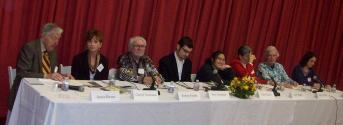
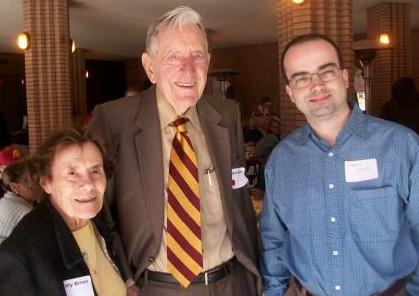

Friday, April 3, 2009; 1:30-3:00 PM; Prof. James E. Birren, Ph.D., Dean Emeritus of
the Andrus Gerontology Center and now 91 years old (b. April 4, 1918), Chaired the Borchard
Foundation Panel on "Intergenerational Stories, Learning about Life" in connection with the USC Autobiographical Studies Program.
Other panelists included Robert W. T. Feindt, Grace Sasake, Eric Swenson, Lora Walker, Nancy
E. Warner, M.D., and Sarah Zoller.
Prof. Birren is one of the living legends in the field of gerontology. Profs. Alex Comfort,
Bernard Strehler, and Roy Walford are now gone. As a past President and Co-Founder of the
Gerontological Society of America, Birren was the founding Dean of the USC Leonard
Davis School of Gerontology. Birren was also the Associate Director of the UCLA Center on
Aging until retiring in 2003. The American Society on Aging inducted him into its Hall of
Fame in 2004. He continues to teach "Guided Autobiography," a course that he first
developed over 30 years ago!
"Ecumenical Panel Discussion on Stem Cells and
Cloning at LMU"
Wednesday, March 17, 2009; [7:00 - 9:00] PM; The Bioethics Institute of Loyola
Marymount University held a panel discussion on "The [Latest] Vatican Instruction on
Bioethics: The Dignity of the Person" (December 2008). Prof. Nicholas J. Kockler, Ph.D.
provided an introduction; Prof. James J. Walter, Ph.D. gave an overview of the Dignitas
Personae Instruction from the Vatican, a three-part, 23-page document with 59 scholarly
footnotes that sought to update Catholic teaching since the Donum Vitae Instruction was
issued back in 1987. Dr. Miriam Pivne Cotler, Ph.D., gave the Jewish perspective; Dr. Jonathan
Rothchild, Ph.D. gave the Protestant perspective (Lutheran); Prof. Amir Hussain, Ph.D. gave the
Muslim perspective; and Dr. Roberto Dell'Oro, Ph.D. gave the Roman Catholic perspective.
In the end, nobody on the panel nor in the audience during the question-and-answer session
was able to find a satisfactory of definition of the exact time of ensoulment, hominization, or the
establishment of "personhood" that would give full moral status to the developing embryo. The
range of times went from: exactly at conception (one-celled zygote; the Roman Catholic view),
10 days (implantation of a fully-formed balastocyst with a few hundred cells; the Jewish view);
40 days (Aristotle), and even 120 days (as mentioned in the Koran). The distinction between
an acorn and an oak tree, between a large pile of bricks and a finished shopping center, between
the potentiality and the actuality was as difficult as ever to come to grips
with.
Ref.:
www.lum.edu/bioethics.
"Watson Lecture on DNA at CalTech"


Wednesday, March 11, 2009; 8:00 PM PDT; Prof. Barbara Wold, Bren Professor of Molecular
Biology and Director of the Beckman Institute at CalTech in Pasadena, CA presented the Earnest
C. Watson Lecture to a full audience at Beckman Auditorium on the topic "How Does the
Human Genome Work?"
Determining the DNA sequence of a reference human genome, as biologists of the Human
Genome Project did in 2003, did not tell us how our genome works. The big challenge is to
bring that genome sequence to life. The past five years have provided an unexpectedly fast and
wild ride for scientists trying to break the regulatory code we know is present in the genome. We
have harnessed dramatic improvements in DNA sequencing technology to now ask how each of
our 25,000 human genes works differently in health and disease.
No part of biology, especially the machinery of DNA expression as it is now being
uncovered, seems to have been implemented in an elegant manner, the sort that a design
engineer could be proud of. Instead, all life forms are the prisoner of their phylogenetic,
evolutionary history; and all biological solutions to standard engineering problems only seem to
work after a fashion in spite of themselves. All biology is a tentative solution in progress, and
we humans are no exception to this rule.
"President Obama Overturns Bush Policy on Stem Cell
Lines"
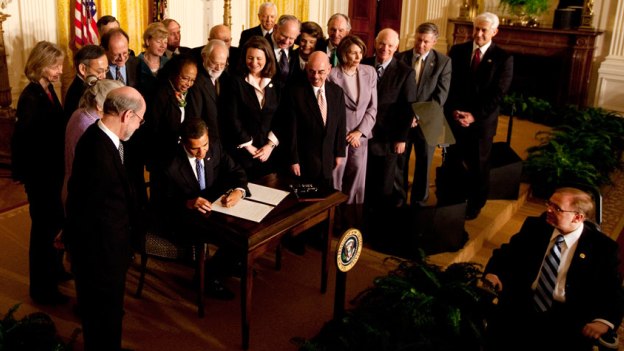
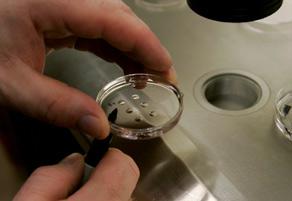
Click on the White House.gov photo for details.
March 9, 2009; 11:45 AM EDT; The East Room of the White House - - President Bush singed an
Executive Order this morning in the East Room of the White House overturning former President
Bush's ban on Federal funding of embryonic stem-cell research to the applause of many
scientists (including Harold Varmus, as well as nine other Nobel Prize winners), politicians
(including Sen. Diane Feinstein and Rep. Henry Waxman from California and 28 other members
of Congress), and even several patients (including Rep. James R. Langevin (D, RI)), who was
paralyzed at the age of 16) in the audience.
President Obama recalled the life of Christopher Reeve in his remarks. Prof. Arthur Caplan,
biomedical ethicist from the University of Pennsylvania in Philadephia weighed in on CNN-
TV on the incongruous moral position of right-wing fundamentalist Christian conservatives.
"There are ~600,000 frozen blastocysts in IVF clinics that will otherwise be destroyed. They
cannot all be converted into so-called 'snow flake babies' at the maximum rate of maybe 100 per
year before they get too old." Conspicuously absent during the ceremony was any mention of
former President George W. Bush and the damage his policies did to our own scientific/medical-
research agenda over the last eight years (from August 9, 2001 at the President's ranch in
Crawford, TX to the present time).
So, what's next? It will be four months before the NIH issues new guidelines for grant
proposals.
- - Editor
"Obama Overturns Bush Policy on Stem Cells"
by
Philip Elliott, AP
March 9, 2009; Washington, D.C. President Barack Obama is ending former President
George W. Bush's limits on using Federal dollars for embryonic stem cell research, with advisers
calling the move a clear signal that science - not political ideology - will guide the
Administration. Obama has signed an Executive Order on stem cells and memo on science today
in an East Room ceremony, a long-promised move that would fulfill a campaign promise.
Advisers said it was part of a broader declaration on science that would guide the
administration's policies on matters ranging from renewable energy to climate change.
"I would simply say this memorandum is not concerned solely - or even specifically -
with stem cell research," said Harold Varmus, Chairman of the White House's Council of
Advisers on Science and Technology. He said it would address how the government uses science
and who is advising officials across federal agencies.
Bush limited taxpayer money for embryonic stem cell research to a small number of stem-
cell lines that were created before August 9, 2001. Many of those faced drawbacks. Hundreds
more of such lines - groups of cells that can continue to propagate in lab dishes - have been
created since then. Scientists say those newer lines are healthier and better suited to creating
treatments for diseases, but they were largely off-limits to researchers who took federal dollars.
"We've got eight years of science to make up for," said Curt Civin, whose research allowed
scientists to isolate stem cells and who now serves as the founding director of the University of
Maryland Center for Stem Cell Biology and Regenerative Medicine. "Now the silly restrictions
are lifted."
The proposed changes do not fund creation of new lines, nor specify which existing lines
can be used. They mean that scientists, who until now have had to rely on private donations to
work with these newer stem cell lines, can apply for government money for the research, just like
they do for studies of gene therapy or other treatment approaches.
At the same event, the President planned to announce safeguards through the National
Institutes of Health so science is protected from political interference. "We view what happened
with stem cell research in the last Administration is one manifestation of failure to think carefully
about how Federal support of science and the use of scientific advice occurs," Varmus said.
Embryonic stem cells are master cells that can morph into any cell of the body. Scientists
hope to harness them so they can create replacement tissues to treat a variety of diseases -
such as new insulin-producing cells for diabetics, cells that could help those with Parkinson's
Disease or maybe even Alzheimer's, or new nerve connections to restore movement after spinal
injury.
Bush and his supporters said they were defending human life; days-old embryos -
typically from fertility-clinic leftovers otherwise destined to be thrown away - are destroyed
for the stem cells.
The long-promised move will allow a rush of research aimed at one day better treating, if
not curing, ailments from diabetes to paralysis - - research that has drawn broad support,
including from notables such as Nancy Reagan, widow of the late Republican President Ronald
Reagan, and the late Christopher Reeve.
The move also will highlight divisions within the Republican Party, now in the minority and
lacking votes in Congress to stop Obama.
Rep. Eric Cantor, the No. 2 Republican in the House, said the focus should be on the
economy, not on a long-simmering debate over stem cells. "Frankly, Federal funding of
embryonic stem-cell research can bring on embryo harvesting, perhaps even human cloning that
occurs," he said Sunday on CNN's "State of the Union." "We don't want that. ... And
certainly that is something that we ought to be talking about, but let's take care of business first.
People are out of jobs."
Reactions:
Former First Lady NANCY REAGAN: "I'm very grateful that President Obama has lifted
the restrictions on federal funding for embryonic stem cell research. These new rules will now
make it possible for scientists to move forward. I urge researchers to make use of the
opportunities that are available to them, and to do all they can to fulfill the promise that stem cell
research offers. Countless people, suffering from many different diseases, stand to benefit from
the answers stem cell research can provide. We owe it to ourselves and to our children to do
everything in our power to find cures for these diseases -- and soon. As I've said before, time is
short, and life is precious.
Sen. TED KENNEDY: "Sometimes medicine advances through inspired discoveries in the
laboratory, and sometimes through brilliant insights at the patient's bedside. But today, an
extraordinary medical breakthrough was achieved with the stroke of a pen. With today's
executive order, President Obama has righted an immense wrong done to the hopes of millions of
patients. The President's action today unlocks the enormous potential of life-sustaining medical
progress against a wide range of serious illnesses and injuries, all within strong ethical
guidelines."
California Governor ARNOLD SCHWARZENEGGER: "President Obama's Executive
Order is a huge win for the millions of people who suffer from spinal cord injuries, diabetes,
Alzheimer's, Parkinson's, Multiple Sclerosis and many other illnesses. Californians were the first
in the nation to support and fund embryonic stem cell research and we are big believers in the
power of this revolutionary science to not only improve but to save lives. Because of the federal
ban, Californians world-renown research facilities have had to have separate areas for the
federally-funded and the non-federally funded programs, causing duplicative efforts. I applaud
President Obama for removing this barrier which allows California to maximize critical research
funding so we can continue to lead the world in stem cell research."
Author of California Proposition 71 and Chairman of the CIRM ISOC, ROBERT KLEIN:
"America thanks you, President Obama. On behalf of seven million visionary California voters
who approved the California Stem Cell Research Initiative in 2004, we say thank you' from
every child, husband and wife, and parent who is struggling with chronic disease or injury in
California and throughout the world. Medical research can now advance our hopes for therapies
that can ease suffering by accessing the full range of stem-cell research in all of its potential."
Refs.:
1. AP "Obama To Reverse Funding Ban On Stem Cell Work,"
NPR-Radio (~5:30 PM PST; March 6,
2009).
2. Karen Kaplan and Noam N. Levey, "Obama To Reverse Stem Cell Policy: Lifting Bushs's
Limits on Research Will Reopen a Door for Science," The Los Angeles Times, pp. A1,
18 (March 7, 2009).
3. Laura Meckler, "Obama to Reverse Policy on Stem Cells," The Wall Street
Journal, p. A4 (March 7, 2009).
4. Washington, D.C., "Taking Politics Out of Science," The Los Angeles Times, p. A8
(March 9, 2009).
5. Ron Winslow and Gautam Naik, "University Labs Set To Gain from Stem-Cell Switch,"
The Wall Street Journal, pp. A1, 4 (March 9, 2009).
6. Larry Mantle, "Air Talk," Interviews with Dr. Arnold Kriegstein, Director of the Grove Center
on Stem Cells, UCSF, Dr. Hans Keirstead, Director of the Sue and Bill Gross Stem Cell
Research Center, UCI (funded by CIRM and by Geron Corp.), Mr. Robert Klein, CIRM,
"Co-funding of CIRM and NIH along with the pioneering collaborations that CIRM has done
with Canada, UK, Australia, and Japan will be possible", and Carrie Gordon Earll, Executive
Director of the Public Policy Division of Focus on the Family "President Obama's
policy reversal is morally bankrupt.", NPR Radio ([10:00 - 11:00] AM PDT; March 9,
2009).
7. "The World," Interview with Dr. Stephen Menker, King's College, London; UK, NPR
Radio (12:10 PM PDT; March 9, 2009).
8. Nathan Bupp (Voice: 716-636-7571 ext. 218; E-mail: nbupp@centerforinquiry.net)
"Center for Inquiry Applauds Stem-Cell Funding
Reversal: CFI Lends Support To Memorandum Assuring Scientific Integrity" (March 9,
2009).
9. CNN, " Obama Moves To Separate Politics and Science,"
CNN (March 9, 2009).
10. Bob Grant, "Industry Set for Stem Cell Profits The Scientist (March 9, 2009).
11. Janet Raloff, "President Reverses Federal Ban on Stem-Cell Funding: Researchers Will Now
Have Access to Embryonic Cells for Studying Diseases Including Diabetes, Heart Ailments, and
Parkinson's Disease," Science News.
12. Jim Tankersley and Noam N. Levbey, "Obama Remakes Science Agenda: Restores
Scientific Integrity'," The Los Angeles Times, pp. A1, 16 (March 10, 2009).
13. Karen Kaplan, "Funds Can Flow to New Lines of Cells," The Los Angeles Times, p.
16 (March 10, 2009).
14. Editorial, "Stem Cell Sanity: Now that Obama Has Opened Up the Research, Federal Funds
for Work in California would be a Wise Move," The Los Angeles Times, p. A24 (March
10, 2009).
15. Sheryl Gay Stolberg, "Obama Puts His Own Spin on the Mix of Science with Politics,"
The New York Times, pp. A3, 15 (March 10, 2009).
16. Nicholas Wade, "Rethink Stem Cells? Science Has in Rethinking Stem-Cell Policy,
Scientists May Be Ahead of the Game," The New York Times, pp. A3, D1,3 (March 10,
2009).
17. Editorial, "Science and Stem Cells" The New York Times, p. A3, 22 (March 20,
2009).
18. Washington, D.C. "Obama Clears Way To Expand Embryonic Stem-Cell Work," The
Wall Street Journal, pp. A1, 4 (March 10, 2009).
19. Op-Ed by Robert P. George and Eric Cohen, "The President Politicizes Stem-Cell Research,"
The Wall Street Journal, p. A13 (March 10, 2009).
{Remark: The superficially logical argument presented actually contains such evocative
language as the "very dawn of life," and "For those who believe in the highest ideals of
deliberative democracy, and those who believe we mistreat the most vulnerable human lives at
our own peril, Mr. Obama's claim of taking the politics out of science' should be lamented, not
celebrated." Notice how the adjective "vulnerable," which applies to persons, is being
incorrectly used to apply to a collection of cells without a nervous system (blastocyts are human
[human DNA] and alive [therefore "human lives"]) but not "vulnerable human lives." "When
does a human life (a blastocyst in this particular case) become a person?" is the question that is
sadly not being asked in this presuppositional-logic fallacy. The answer is "post implantation in
the womb of the mother and at a stage of development that requires the presence of a nervous
system." The traditional example of a presuppositional logic fallacy is "When did you stop
beating your wife?" which only makes sense in the context of your once having done so, and not
otherwise. Prof. George of Princeton and Mr. Cohen, Editor of The New Atlantis, are
both native speakers of English with distinguished literary skills but are clearly linguistically
challenged when it comes to establishing a one-to-one correspondence between words and
elements of reality (this requires familiarity with semantics and pragmatics, not just morphology,
spelling, punctuation, and syntax).}
20. Dan Vergiano, "Stem-Cell Funding Expanded: President Reverses Limits from Bush
Administration: What This Means: Obama's Order Opens Up Research Funds, Criticism,"
USA Today, pp. 1A, 1D, 2D (March 10, 2009).
21. Editorial, "Stem Cell Reversal Fixes Bush's Flawed Compromise: Our View: Ex-President's
Order Tried To Strike a Balance, But It Ultimately Failed," Opposing View by Tony Perkins,
President of the Family Research Council, which promotes the sanctity of human life in national
policy: "Why Choose Human-Embryo Research over Ethical Alternatives?" USA
Today, p. 10A (March 10, 2009).
22. Ron Winslow and Gautam Naik, "Obama Overturns Bush Policy on Stem-Cell Research
Funding," The Wall Street Journal (March 10, 2009 on-line).
Prof. Irving Weisman, Director of Stanford University's Stem Cell Biology and Regenerative
Medicine Institute in Palo Alto, CA, said "... In this time of very hard economic times, there is no
venture capital group of investment banker who will fund [taking promising discoveries from the
lab into initial clinical trials].
23. Letters from Nick Kobliska of Bakersfield, Gary Curtis of Valencia, and Stephen J. Forman,
M.D. of City of Hope Cancer Center in Duarte, CA, The Los Angeles Times, p. A30
(March 12, 2009).
24. Draft NIH Guidelines
(April 17, 2009).
25. Washington, D.C., "Agency Offers Guidelines for Stem-Cell Research," The Wall Street
Journal, pp. A1,2 (April 18, 2009).
26. Washington, D.C., "Stem Cell Lines May Expand," The Los Angeles Times, p. A18
(April 18, 2009).
27. Constance Holden and Jocelyn Kaiser, "Draft Stem-Cell Guidlines Please Many, Disappoint
Some," Science, Vol. 324, No.5926, p. 446 (April 24, 2009).
"Stem Cells for Heart Disease"
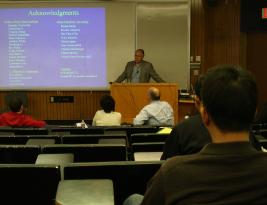
Friday, February 20, 2009; Dr. Eduardo Marban, M.D., Ph.D., Director of the Heart Stem Cell
Treatment Center at Cedars Sinai Medical Center in Los Angeles, presented Cardiology Grand
Rounds at UCLA (23-105 CHS) at Noontime to over 50 students, residents, fellows, and faculty
in the Department of Medicine. US FDA approval has been granted to perform a Phase-I
Clinical Trial starting this Spring, pending approval by the Cedars Sinai IRB. Dr. Marban
explained that human stem-cell therapies require clinical decisions along a wide array of
dimensions: (1) Source of cells (e.g., autologous vs. HLA matched); (2) Type of cells (iPSC's vs.
hESC's); (3) Numbers of cells to be infused; (4) Route of Administration (IV vs. direct injection
into an organ); (5) Time of Administration (immediately following trauma or waiting 5 days); (6)
Initial maturation of cells in vitro; (7) Life history of the new cells in the context of the
old matrix; and lastly (8) Measurement of the functional capacity of cells in situ (e.g.,
contractility of muscle fibers or Ejection Fraction (EF) of the heart as a pump).
"Secrets of the Oldest Old"

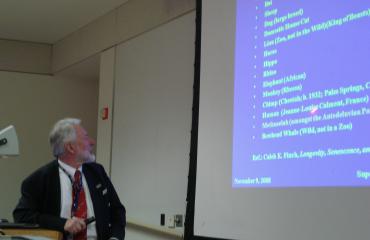


February 13, 2009; [1:00 - 3:00] PM; Prof. Stephen Coles presented a two-hour Marschak
Colloquium entitled "The Secrets of the Oldest Old" at the UCLA Anderson Business School.
"Charles Darwin's Bicentennial"
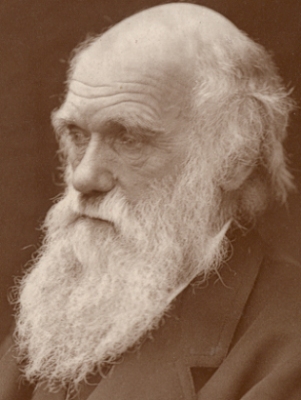
February 12, 2009; In connection with he 200th birthday of one of our GRG Patron Saints, click
on the photo of Charles Darwin above for an on-line archive of his complete
(voluminous) works (on-line). - (Dr. John van Wyhe, webmaster).
It seems that Darwin suffered severe gastrointestinal problems in his later years. He sometimes
vomited every day for two weeks at a time and suffered severe flatulence. He also had an
appalling eczema [1].
Refs.:
1. Michael Neve, "Mr. Darwin Regrets: Why the Great English Naturalist Would Be Dismayed
by the Bicentenary Hoopla," The Wall Street Journal, p. W3 (February 14, 2009).
2. Ian Bell, "On the Origin of Ignorance,"
Sunday Herald (February 14, 2009).
"LA-PSR Ambassadors Meeting"


Saturday, February 7, 2009 [10:00 AM - 2:00 PM]; LA-PSR (The Los Angeles Chapter of
Physicians for Social Responsibility) Ambassadors held a seminar at the USC Main Campus to
discuss the topic Nuclear Weapons Treaties in he new Administration.
"Sir Lancelot Clone, Lancey, in Florida"
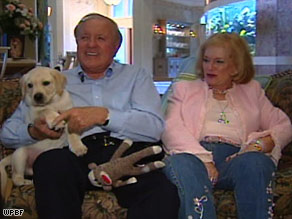
Every dog has his day, but Sir Lanc9elot -- or at least his carbon copy -- has a second
one. Edgar and Nina Otto show off ten-week-old Lancey, a clone of "the most human of
any dog we've ever had."
January 29, 2009; (CNN) - - Edgar and Nina Otto show off 10-week-old Lancey, a
clone of "the most human of any dog we've ever had." A Boca Raton, FL, couple paid a
California firm $155,000 to clone their beloved Labrador retriever, who died from cancer a year
ago. The clone, a 10-week-old puppy dubbed Lancey, was hand-delivered to them earlier
this week by Lou Hawthorne, Chairman of BioArts International, a biotechnology
company.
"One minute with Lancey and you know he's special. He's both extremely aware and very
sweet," Hawthorne said in a BioArts statement. Edgar and Nina Otto said they began thinking
about cloning Sir Lancelot about five years ago. "I said 'Well, you know, it wouldn't hurt to have
his DNA frozen,' and that's what we did," Nina Otto told CNN affiliate WPBF.
The Ottos were one of five families to bid and win a BioArts auction for a chance to clone
their family dog, according to a BioArts statement. Lancey is the world's first commercially
cloned dog, the company said; the Ottos are the first of six current clients to receive their clone.
Sir Lancelot's DNA sample was sent to the Sooam Biotech Research Foundation
in Seoul, South Korea, which provides cloning services to BioArts. Researchers there put the
DNA into an egg, and Lancey was born November 18, 2008, according to BioArts.
The Ottos said they have had many beloved dogs over the years -- and have nine others
currently -- but maintain Sir Lancelot was special. "Sir Lancelot was the most human of any dog
we've ever had," Edgar Otto said in the BioArts statement. "He was a prince among dogs." In an
interview with WPBF, Edgar Otto said Sir Lancelot "was a very, very, very special dog
to us. And we've given a lot more to the Humane Society than we've ever spent on this project."
For its part, The Humane Society of the United States says "it's against the
commercial cloning of animals." "Given the current pet overpopulation problem, which costs
millions of animals their lives and millions in public tax dollars each year, the cloning of pets has
no social value and in fact may lead to increased animal suffering," the organization said on its
website.
"For those looking to replace a lost pet, cloning will not create an animal identical to the one
who is gone; cloning cannot replicate an animal's uniqueness. Cloning can only replicate
the pet's genetics, which influence but do not fully determine his physical attributes or
personality."
The Ottos, however, said replicating Sir Lancelot's genetics is enough for them. Edgar Otto
said he realizes Lancey might not be just like their departed dog, but "if he's different, we're not
going to love him any less."
Edgar Otto is the son of the late Edwin Otto, who was part of the founding of
NASCAR and a "motor-sports pioneer," according to
ottomotorsports.com.
Ref:
CNN, "Florida couple clones beloved dog for $155,000," (January 29, 2009).
"Missy Clone Finally Successful"


January 28, 2009; The left photo is a picture of the original Missy on the wall of Dr. John
Sperling's home library at his estate in Phoenix, AZ. On the right is a Missy clone, one of ~six
such puppies from Seoul, SOUTH KOREA. According to Dr. Sperling, the similarities to the
original Missy are truly remarkable. Missy2, BTW, was extremely well behaved around ~50
persons attending a reception with food and drinks.
Click for more details on the
Missyplicity Project.
We are proud to note for historical purposes that an original photo of Missy from
August 26, 1998 (~ a decade ago) still resides on our GRG website (scroll to the bottom of the
main page and then to the "archival material" page of the continuing main page. References to
Genetic Savings and Clone (GSC) of Sausalito, CA can be found in this News
Section of our website for prior years [2000 - 2006]. Even though GSC closed down
because the technical and business challenges were so vast, the quest to clone Missy continued
and with the help of our colleagues in Seoul was finally successful. We are pleased to document
this adventure.
"Chris Heward Open House at the Estate of Dr. John
Sperling"
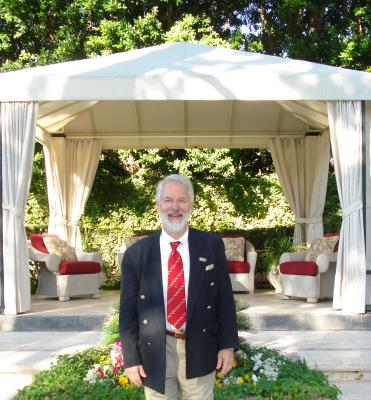
Steve Coles in the back yard of the Estate of Dr. John Sperling in Phoenix, AZ.
Candida Lawrence, author and founding editor of
MEMOIR, is seeking to compile an
anthology of Chris Heward's life for publication. From your experiences of working with him,
please contribute to her your anecdotes, insights, lessons learned, war stories, and impressions.
Send contributions or questions to
memoriesofchris@gmail.com.
Please contribute any thoughts and experiences if you were involved with Chris Heward's
work, especially:
in the search for a cure for Chris, such as his biopheresis treatment in Bavaria, GERMANY or
proposed therapy in Florida (that was never done).
Candida is looking for full accounts, which could help others in the future or could be a
source of comfort to Chris's family.
Chris's wife Pamela informed me that, per his wish, his body was donated to Science
Care. Tissues not exploited for science are to be cremated and the ashes returned to the
family. Per Chris's last wishes, the ashes will be scattered in the mountains of Colorado.
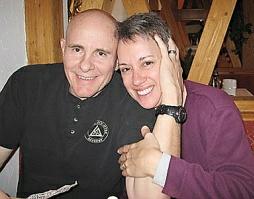
Chris and Pamela Heward in Germany in December 2008.
Ref: Connie Cone Sexton, "Obituary for Chris Heward: Valley Scientist's Life Was a
Hunt for Answers," Arizona Republic (February 22, 2009).
"The FDA Approves Geron Corp.'s Phase-I Application
for First Human Embryonic Stem-Cell Treatment"

January 23, 2009; The FDA has approved the first human clinical trial of embryonic stem-cell
therapy. The initial application will be in spinal cord injury, although chronic age-related
neurodegenerative diseases like Alzheimer's, Parkinson's, and Multiple Sclerosis are next in line.
The stem cells used for this study were derived from the 60 existing stem-cell lines approved in
August 2001 by the Bush Administration. Before that time, Federal research dollars were not
allowed to be used for stem-cell research. The oligodendrocyte glial/nerve cell progenitors
differentiated in culture from the embryonic line using a proprietary recipe of "growth factors"
(the hard part) are dubbed by the code name GRNOPC1. The research, in
collaboration with Prof. Hans Keirstead of UC Irvine, was published in The Journal of
Neuroscience.
Refs.:
1. Ron Winslow and Alicia Mundy, "First Embryonic Stem-Cell Trial Gets Approval from the
FDA," The Wall Street Journal, pp. A1, 12 (January 23, 2009).
2. Thomas B. Okarma, M.D., Ph.D., President and CEO of Geron Corp. of Menlo
Park, CA, was interviewed on CNN-TV (January 23, 2009; 10:10 AM PST; TRT = ~4
min.)
3. Karen Kaplan, "Stem-Cell Trial Approved for Spinal Cord Injuries: Embryonic Cells Now
Appear Safe Enough To Use on Humans," The Los Angeles Times, pp. A1, 14 (January
24, 2009).
The FDA NDA 21,000-page Application was submitted in April 2008. So, the timing of the
approval was unrelated to the change in Administrations, which was coincidental.
"Three Day Processes of Aging Conference at
The Salk Institute"
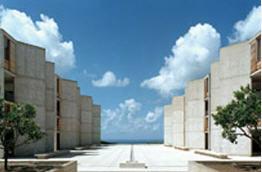
Click on the Image for details.
January 8-10, 2009; Salk Institute for Biological Studies; La Jolla, CA; Speakers at the
The Symposium on Biological
Complexity: Processes of Aging included the following:
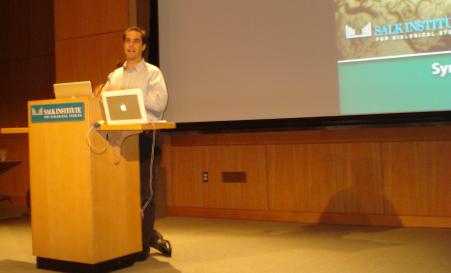
Dr. Andrew Dillin, Conference Organizer and Session Chairman on Saturday morning
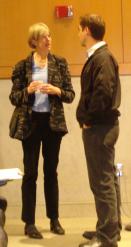
Dr. Cynthia Kenyon, Keynote Speaker on Thursday afternoon
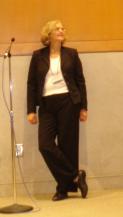
Dr. Elizabeth Blackburn, Session Chairman on Friday morning
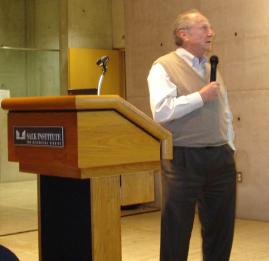
Dr. Michael Meselson, Keynote Speaker on Saturday evening
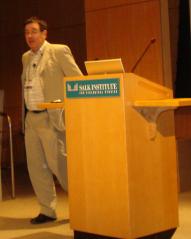
Dr. Tom Kirkwood, Session Chairman on Saturday afternoon
Breaking news was announced at the very start of the meeting by Marc Collins that The
Paul Glenn Foundation will fund the Salk Institute for aging studies at the rate of $1 million
per year for the next five years, along with the prior MIT and Harvard Glenn Centers.
Click for News Items from 2008.








































































